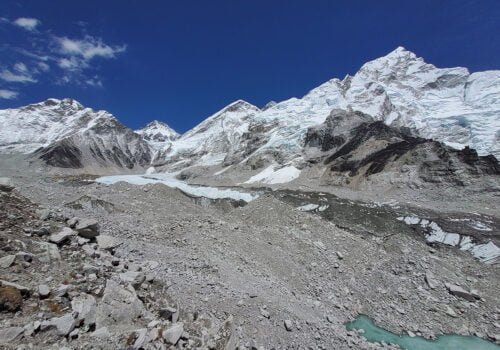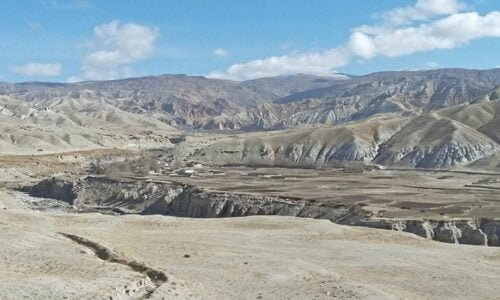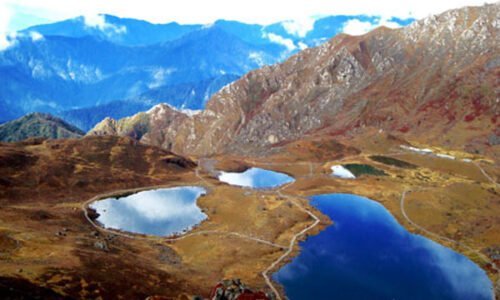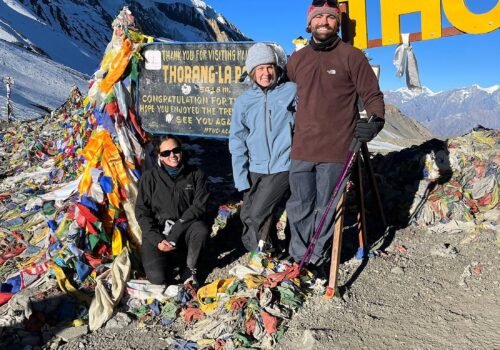Tips for Winter Trekking in Nepal
6 Feb 2025 6 min to read
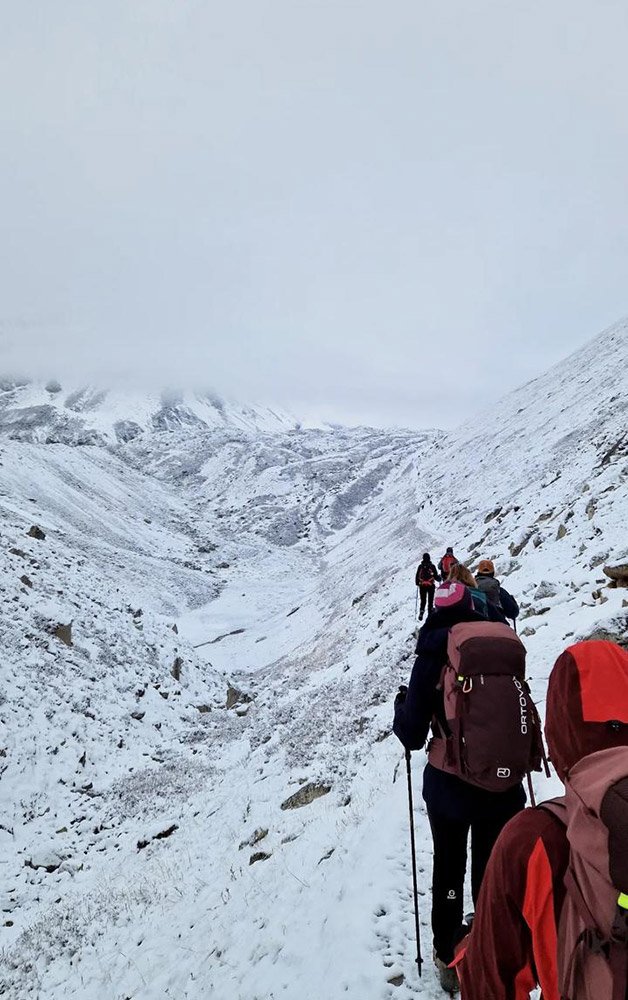
We, Outdoor Himalayan Treks present a useful article on Tips for winter trekking in Nepal for travel or trek enthusiasts. Winter trekking in Nepal offers scenic beauty with the high mountains covered with snow, peaceful trails, and fewer crowds. December to February are winter months in Nepal. Most lower region winter treks can be easily done with proper planning and preparations. The tips for winter trekking in Nepal to ensure a comfortable trekking experience are as follows.
Select a Suitable Trek Destination
- Firstly, select a suitable trek destination for a comfortable and memorable trekking experience.
- Make sure to select a destination considering your physical fitness and mental stability.
- Also, consider the elevation, availability of accommodation, meals, and transport.
- We suggest trekking in the lower elevations for beginners. Such as Ghorepani Poon Hill, Everest Panorama, Tsum Valley, Langtang Valley exploration, etc.
Seek Professional Trek Guidance
- The geography of Nepal is diverse hence, seek professional trek guidance for proper planning and better trek experience.
- We suggest booking through a trusted travel agency as it helps you with all your logistics and permits.
- For a hassle-free winter trek, the expertise of a trusted trek agency proves beneficial.
Suggested: Everest Panorama Trek
Hire a Professional Guide and a Porter
- Hiring a professional guide and a porter ensures safety and comfort as their experiences prove beneficial.
- Professional local guides provide valuable knowledge on trails, weather, and altitude during winter treks.
- A professional guide helps you stay connected on the right path, takes care of your health, and manages all your necessities.
- A porter makes your trek comfortable by carrying your backpack and luggage ensuring you enjoy and have fun.
Wear Suitable Clothes
- Wear suitable clothes to stay warm and comfortable during winter treks.
- Choose the best-layered clothing such as moisture-wicking base layers, insulating middle layers, and a waterproof & windproof outer layer.
- It is best to avoid cotton and choose the best fabrics of clothes for more warmth and easiness during the winter trek.
- The proper layered clothes are essential for regulating body temperature during changing cold conditions.
Also Read: Pros and Cons of Winter Treks in Nepal
Wear Comfortable Shoes
- Comfortable shoes make your trekking journey enjoyable and unforgettable.
- Wear sturdy and waterproof shoes that also support the ankle.
- It is best to wear shoes before starting the trek to avoid blisters and injuries.
- Choose a right-fit strong shoe that is durable on slippery and rocky trails during the winter treks.
Layer Up from Top to Bottom
- The winter weather is harsh so layer up from top to bottom to protect your body and skin.
- Wear a warm beanie, insulated gloves, and socks, and cover your face with a scarf or balaclava to prevent freezing winds.
- Thermal socks, insulated gloves, and boots prevent you from possible frostbite or cold uneasiness.
- Take care of yourself and give special attention to your fingers, toes, ears, eyes, and nose when exposed to freezing winds.
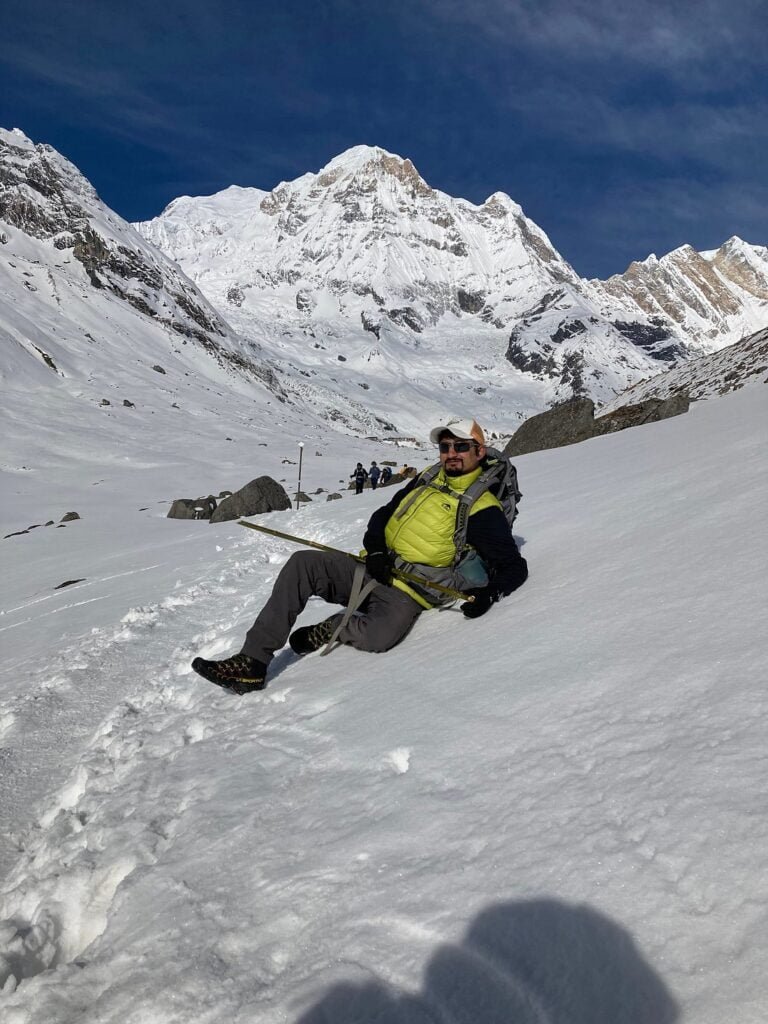
Pack Essential Clothing
- Only pack essential clothing for flexibility and convenience as it proves fruitful even if you don’t hire a porter.
- Pack lightweight insulation clothes, thermal socks, insulated gloves, and boots, a warm beanie or hat, gaiters, and essential extra layers.
- Be sure all your packed clothes provide warmth during freezing colds and even at high elevations.
- Avoid over packing to ensure a comfortable winter trekking experience.
Pack Essential Medicines and Gear
- Make sure to pack essential medicines and gear to safeguard your comfort and health during the winter treks.
- Pack a down-filled sleeping bag, prescribed medicines, and energy snacks to prepare for winter treks.
- Don’t miss out on packing gear like trekking poles, sunglasses, sunscreen, a personal hygiene kit, extra batteries, and a power bank.
Suggested: Langtang Valley Exploration
Stay Hydrated and Eat Healthy Foods
- To avoid tiredness and altitude sickness, stay hydrated and eat healthy & warm foods.
- Stay warm by drinking hot water, soups, and tea or coffee.
- Eat warm and healthy foods including nutrients (carbohydrates, protein, and healthy fats).
- Healthy nutritious food provides fuel to the body for long-hour winter treks.
Acclimatize Properly
- Acclimatization is the key to preventing altitude sickness so take proper acclimatization rest.
- Listen to your body signs and avoid pushing beyond your body limits.
- We suggest sticking to the trek itinerary and following the guidelines.
- Proper acclimatization helps to adapt to the higher elevations minimizing altitude sickness risk.
Have a Backup Plan
- The winter weather is unpredictable and thus requires having a backup plan for winter trekking.
- Flight delays or cancellations (Everest or Annapurna regions), heavy snowfall or avalanches, and road blockages are some winter trek challenges.
- Get ready with a backup plan such as flexible travel dates, extra days, and taking alternative routes.
- Always be prepared both physically and mentally for unexpected changes during the winter treks.
Also Read: 4 Seasons Nepal Trekking Packing List
Use Trek Gear
- We recommend using trekking gear such as trekking poles, Gaiters, and Balaclava for a warm and comfortable trekking experience.
- Trekking poles provide extra stability minimizing leg pains and comfortable walking on uneven trails.
- Wear Gaiters to keep snow and debris out of your boots.
- Wearing a balaclava gives extra protection on your face from freezing winds.
Check Weather Forecasts Regularly
- Winter weather changes rapidly as the altitude rises during the winter trek.
- During the winter trek, regularly keep updated with the weather forecast.
- Be prepared for sudden weather changes and act accordingly.
- If planning to trek at higher elevations, check weather forecasts and plan accordingly taking required precautions.
Stay Safe and Plan Proper
- Winter treks in Nepal are more enjoyable if planned properly and safely.
- Plan treks at lower altitudes as the days are shorter and trekking is slightly easier.
- There is a high chance of availability of accommodation and meals in lower altitude regions.
- Follow the itinerary schedule and guide’s instructions to stay safe.
Suggested: Ghorepani Poon Hill Trek
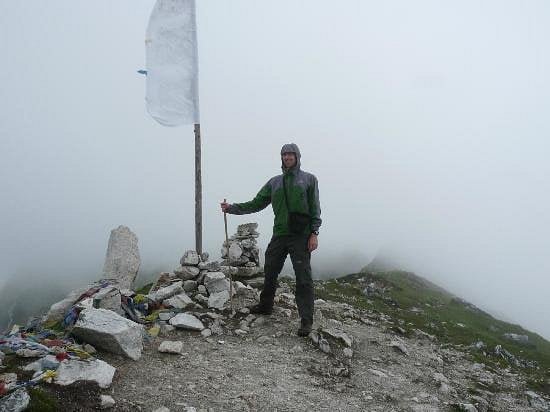
Conclusion
Winter trekking in Nepal is phenomenal and rewarding if done with careful planning considering the cold and unpredictable conditions. The tips for winter trekking in Nepal can be useful for trekkers or travelers planning winter treks. Winter treks offer spectacular beauty in the diverse regions of Nepal. We ensure you won’t regret exploring winter treks with proper planning and preparation and implementing our suggested tips.

